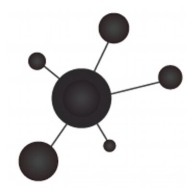

Icinga and Sumo Logic Observability compete in the monitoring and observability space. Sumo Logic Observability seems to have the advantage with feature-rich offerings and perceived value.
Features: Icinga offers a highly customizable platform with a focus on open-source flexibility, object-oriented configuration, and a robust plugin ecosystem for diverse monitoring tasks. Sumo Logic Observability provides advanced analytics, real-time data processing, and machine learning-enhanced insights, making it a strong contender in comprehensive observability solutions.
Room for Improvement: Icinga could improve by enhancing its user interface and simplifying the creation and management of custom plugins. Better documentation and community support are also needed. Sumo Logic Observability needs to refine its learning curve, improve custom field management, and better integrate with existing enterprise solutions.
Ease of Deployment and Customer Service: Icinga's open-source deployment model allows significant customization but requires technical expertise, potentially complicating initial setup. Sumo Logic Observability offers a more intuitive cloud-based deployment with strong support and integration features, simplifying the deployment process but reducing customization options.
Pricing and ROI: Icinga's open-source nature means lower initial setup costs, offering high ROI for users with the expertise to maximize its features. Sumo Logic Observability, with a subscription model, may have higher upfront costs but delivers substantial ROI through reliable, scalable observability features that enhance operational efficiency and reduce downtime.


Icinga monitors systems, network devices, infrastructure, and services, helping manage and analyze server resources. It automates ticket incidents and alerting, providing oversight of client Windows and Linux systems.
Icinga offers comprehensive monitoring of servers including CPU utilization and RAM space, facilitating automated incident management and alerting. Frequently deployed on-premises, this monitoring tool is key for managed services providers and organizations to oversee and ensure optimal performance of various environments, including applications like databases and web servers. It provides extensive features for creating custom plugins, stabilization, scalability, and high customization capabilities suitable for different infrastructure needs.
What are the key features of Icinga?Icinga implementations span multiple industries, providing essential monitoring for IT infrastructure in healthcare, finance, and education. Managed services providers utilize Icinga to maintain and monitor client systems across various environments while ensuring optimal performance and compliance. It is highly valued in these sectors for its ability to customize monitoring, improving operational efficiency and reducing downtime.
Sumo Logic Observability is widely used for log aggregation, analysis, and SIEM capabilities. It assists in monitoring data, creating dashboards, and managing log storage.
Sumo Logic Observability helps teams with logging in production, debugging with trace IDs, and performing queries across large datasets. Developers leverage centralized logs for error detection and tracking metrics like successful transactions and data volume. Security teams integrate it with SOAR systems for automation and enhanced security investigations.
What are the key features?Industries like finance, healthcare, and technology implement Sumo Logic Observability to monitor sensitive data, manage high transaction volumes, and ensure compliance with regulatory standards. Security and development teams benefit from its robust capabilities, enabling effective collaboration and streamlined operations.
We monitor all Cloud Monitoring Software reviews to prevent fraudulent reviews and keep review quality high. We do not post reviews by company employees or direct competitors. We validate each review for authenticity via cross-reference with LinkedIn, and personal follow-up with the reviewer when necessary.